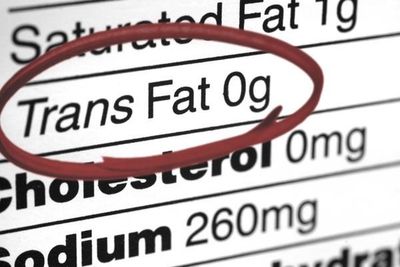You know those guilty pleasures you love, like bags of chocolate chip cookies, frozen pizzas and canned cinnamon rolls? Some of them will get a little healthier soon, thanks to the U.S. Food and Drug Administration's move to remove artificial trans fats from processed foods.
The FDA ruled that partially hydrogenated oils—the major dietary source of industrially produced trans fat—are no longer "generally recognized as safe." That decision was based on increasing scientific evidence and expert testimony that trans fats can increase the "bad" low-density lipoprotein cholesterol and reduce the "good" high-density lipoprotein cholesterol. This raises risk for coronary heart disease and heart attacks.
The FDA estimates that removing artificial trans fats from the nation's food supply could prevent as many as 20,000 heart attacks and 7,000 deaths from heart disease each year, according to a HealthDay news article.
The FDA will allow the food industry three years—to June 18, 2018—to phase out partially hydrogenated oils or seek special FDA approval for use of the oils as a food additive.
Partially hydrogenated oils have been widely used in processed foods since the 1950s. They are created by pumping hydrogen into vegetable oil to make it more solid. They improve the texture, shelf life and long-term flavor of processed foods, according to the FDA.
Many frozen, canned and baked goods contain trans fat, including:
- Crackers, cookies, cakes, frozen pies and other baked goods
- Snack foods (such as some microwave popcorn)
- Stick margarines and some spreads
- Vegetable shortenings
- Non-dairy coffee creamers
- Refrigerated dough products (such as biscuits and cinnamon rolls)
- Frozen pizzas
- Ready-to-use frostings
In 2006, the FDA began requiring food manufacturers to list trans fat on nutrition labels. With pressure from the FDA and an increasing consumer awareness of healthy eating, many companies voluntarily changed the way they processed foods. They stopped using partially hydrogenated oils, thus reducing or eliminating the trans fat in their products.
The Grocery Manufacturers Association reports that producers have lowered the amounts of partially hydrogenated oils in food products by 86 percent since 2003.
After the three-year transition period, partially hydrogenated oils will be gone from processed foods (except by special permission), but trans fat won't be completely eliminated from food, notes Susan Mayne, PhD, director of the FDA's Center for Food Safety and Applied Nutrition. Trans fats occur naturally in meat and dairy products and are found at low levels in other edible oils, where they are unavoidably produced during the manufacturing process.
In the meantime, Mayne encourages consumers to read labels carefully. Even if a food package claims to have "0 grams of trans fat," it's a good idea to read the ingredient list. Under current regulations, companies can claim to have no trans fat if the food contains less than 0.5 grams. The FDA recommends consumers read the ingredient list to see if a produce contains partially hydrogenated oil and avoid it when possible. Even small amounts can add up.
"This is going to be a huge public health victory," Jim O'Hara, director of health promotion at the Center for Science in the Public Interest, told HealthDay. "It's time to get trans fats out of the food supply."


